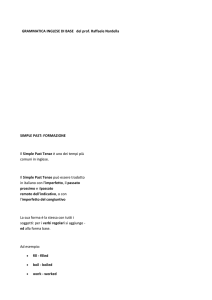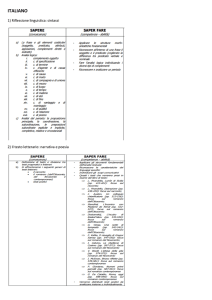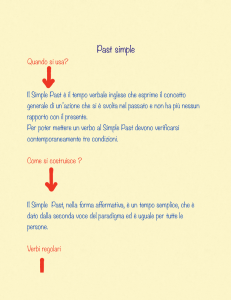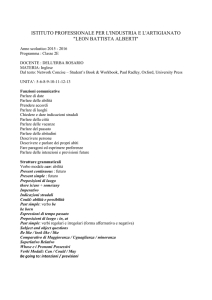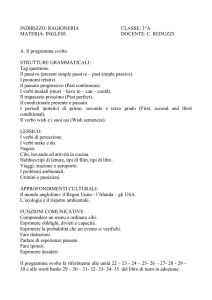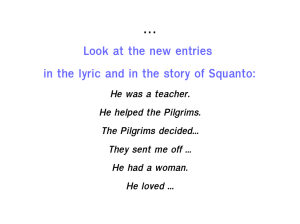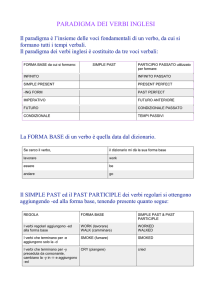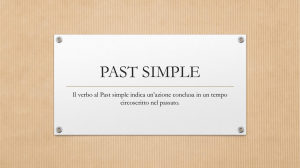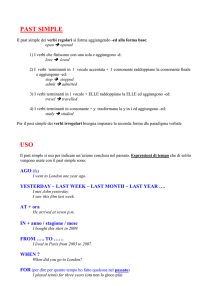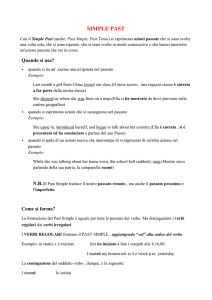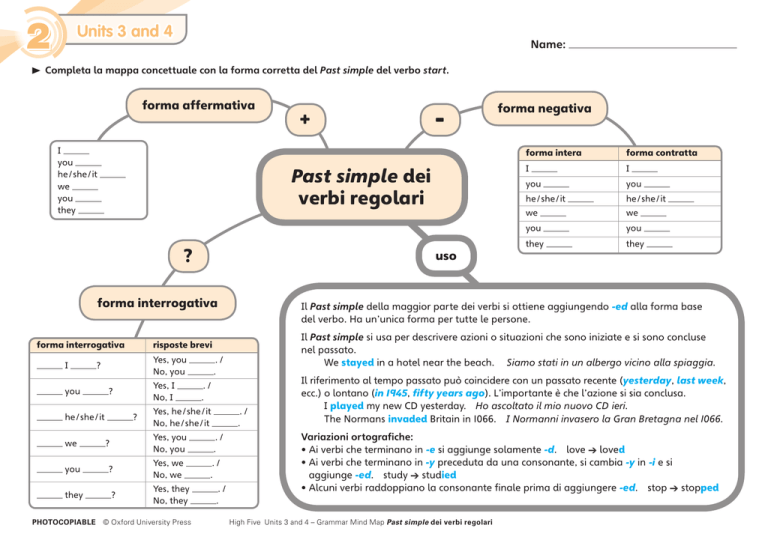
2
Units 3 and 4
Name:
Completa la mappa concettuale con la forma corretta del Past simple del verbo start.
forma affermativa
I
you
he / she / it
we
you
they
uso
forma interrogativa
forma interrogativa
he / she / it
we
you
they
Yes, I
No, I
?
?
Yes, you
No, you
?
?
?
./
.
./
.
Yes, he / she / it
No, he / she / it
Yes, we
No, we
Yes, they
No, they
PHOTOCOPIABLE © Oxford University Press ./
.
./
.
./
.
forma contratta
I
I
you
you
he / she / it
he / she / it
we
we
you
you
they
they
Il Past simple si usa per descrivere azioni o situazioni che sono iniziate e si sono concluse
nel passato.
We stayed in a hotel near the beach. Siamo stati in un albergo vicino alla spiaggia.
./
.
Yes, you
No, you
forma intera
Il Past simple della maggior parte dei verbi si ottiene aggiungendo -ed alla forma base
del verbo. Ha un’unica forma per tutte le persone.
risposte brevi
?
you
-
Past simple dei
verbi regolari
?
I
+
forma negativa
Il riferimento al tempo passato può coincidere con un passato recente (yesterday, last week,
ecc.) o lontano (in 1945, fifty years ago). L’importante è che l’azione si sia conclusa.
I played my new CD yesterday. Ho ascoltato il mio nuovo CD ieri.
The Normans invaded Britain in 1066. I Normanni invasero la Gran Bretagna nel 1066.
Variazioni ortografiche:
• Ai verbi che terminano in -e si aggiunge solamente -d. love ➔ loved
• Ai verbi che terminano in -y preceduta da una consonante, si cambia -y in -i e si
aggiunge -ed. study ➔ studied
• Alcuni verbi raddoppiano la consonante finale prima di aggiungere -ed. stop ➔ stopped
High Five Units 3 and 4 – Grammar Mind Map Past simple dei verbi regolari


